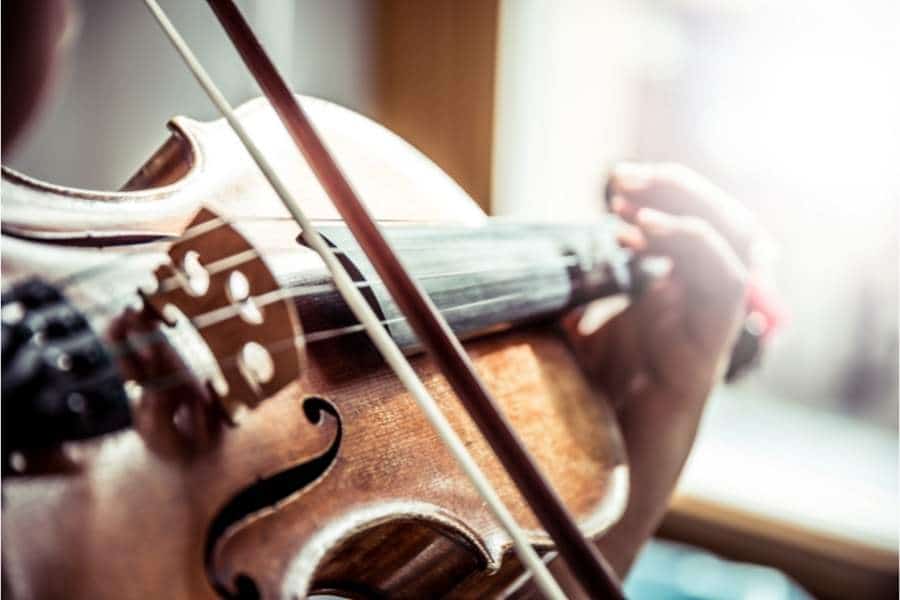Age should never be a barrier to learning something new, especially something as fulfilling as playing the violin. You may have imagined yourself dazzling an audience with your exceptional playing. Well, now, you can make that your reality.
There are helpful tips to play the violin that can take you where you want to be with your instrument. Here are a few effective ways to go about learning how to play the violin as an adult learner.
Learning the Violin as an Adult
Developing an interest in a musical instrument as an adult is not unheard of. In fact, one can even start learning instruments, such as a guitar, piano, and violin, even as a senior.
When it comes to learning how to play the violin, your age shouldn’t discourage you. Instead, it should spur you into pursuing your dreams with even more vigour. Here’s how to approach learning the violin as an adult student.
1. Find Your Instrument
Your journey should start off with finding a suitable instrument. Your grandad may have passed his violin down to you, but even that may not be considered “suitable.” It’s important to choose a violin that aligns with your specific circumstances, which include but aren’t limited to the following:
- Size
- Budget
- Materials
- Condition of the instrument
- Brand
- Beginner-friendly instruments
Some of these elements may matter more than others, but you will have to consider every single one before making a purchase. That way, you are unlikely to regret what you buy.
Given their quality, beginner violins are considered more affordable. However, a student’s progression determines how often you may have to replace them. That means you could find yourself purchasing quite a few in the early stages of your journey.
Ideally, you should buy a second-hand violin if you’re just starting out. Players normally take good care of their instruments, so it’s unlikely you’ll end up with one in desperate need of repair. Retired violinists and ones who are about to quit should be able to provide quite a few options for your eager self.
The problem with this approach is that you may not know where to begin. Without the price tag, you may not be aware of the difference between a low-end instrument and a high-end one. That’s why it’s crucial to read up and do your homework before getting started. A violin is a significant investment, and starting the journey on auto-pilot is not the way to go.
2. Establish a Routine
Now that you have your violin, it’s time to build a structure around your would-be practice sessions. This is how a “practice routine” is established, and it can contribute so much to your progression.
Routines can be hard or flexible; you choose what suits you best. However, any routine should come with some sort of guide, including a set of objectives to accomplish every practice session. That way, progress is made no matter what.
While the difficulty of the exercises should increase with every level, make it a point to set things to your pace. You may be passionate about the violin, but you still want every stage of the journey to be enjoyable.
Rushing into complex techniques could be a recipe for early burnout. So, whether you’re learning in school or on your own, a structured practice session should keep you from wandering aimlessly.
3. Practice Makes Perfect? Not Quite
Contrary to popular belief, practice doesn’t necessarily make perfect. Practising a lot won’t guarantee flawless performance. After all, luck will always have a part to play in how things turn out. That said, you can be sure you’ll deliver something for the books regardless.
Practice is what hones your skills and makes postures, movements, and techniques second nature. It is what builds determination and fuels your passion for your instrument even more. By practising and hitting your objectives, you prove to yourself that you can do it. Hence, you’re even more eager to see how far you can go.
4. Sessions With a Master
Every now and then, an instructor has to be in the picture. It doesn’t matter if you’re a prodigy, a more seasoned player will always have something to impart to your experience.
Whether it’s a more effective approach you haven’t considered or a learning strategy that suits your specific style, a teacher will have quite a few things in store to benefit your journey. Take advantage of that.
5. Play for Other People
There’s something so fulfilling about other people witnessing your violin skills—skills you worked hard to learn and develop. As an adult, there could be a lot more meaning to performing for a crowd, as it may have been something you never thought could have happened. And now it has!
Enjoy, Enjoy, Enjoy!
Some say the best way to master a craft is to not take it too seriously. That could be the approach that does it for you. Keep your interest and passion for the violin burning by keeping things fun and occasionally light and even taking breaks every now and then.















